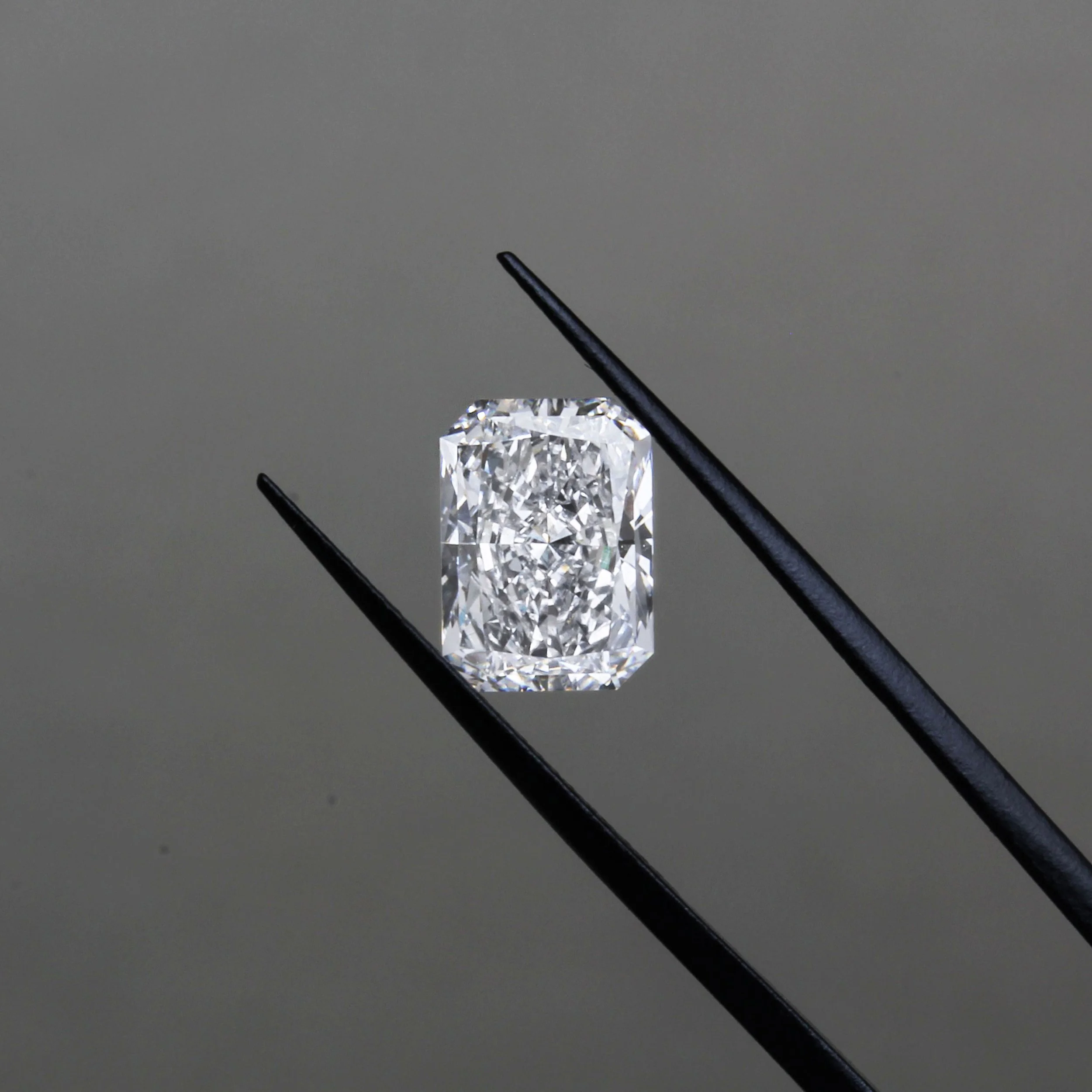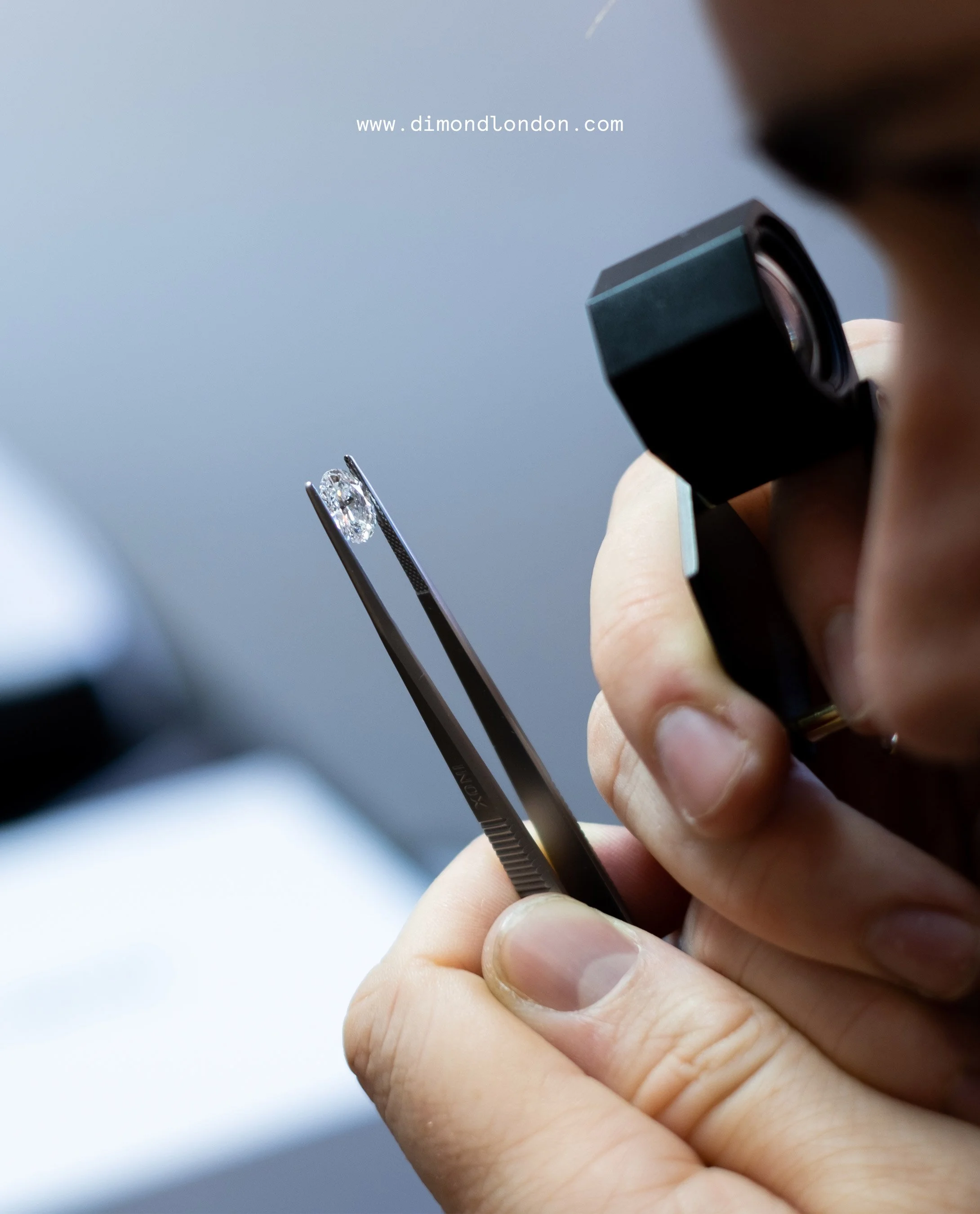UNDERSTANDING DIAMONDS: THE FOUR Cs
At the heart of our philosophy is the belief that knowledge is the key to finding lasting satisfaction. That's why we're passionate about educating our clients and sharing insights. The ‘Four Cs’ of diamond quality serve as the worldwide benchmark for assessing diamond excellence, acknowledged universally. The Four Cs of diamonds are: carat, colour, clarity, and cut. These four factors are the pillars of diamond evaluation and understanding them empowers you to make informed decisions.
Carat
Does size matter? Carat refers to a diamond’s weight, not its size. The bigger, the better? That’s not always the case! A well-cut diamond can appear larger than its carat weight suggests. Carat weight is perhaps the most widely recognised and understood aspects of diamonds grading and refers to the measure of a diamond’s mass, with one carat equivalent to 200 milligrams. While carat weight does not directly correlate with a diamond’s size, it influences its perceived value and rarity. Larger diamonds are scarcer and command higher prices per carat. However, it’s essential to remember that carat weight is just one aspect of a diamond’s overall beauty and value and should be considered in conjunction with the other three C’s.
2. Colour
From icy whites to warm yellows and pinks, diamond colours vary. The colour of a diamond is graded on a scale that ranges from D (colourless) to Z (light yellow or brown). Colourless diamonds are highly sought after for their purity and brilliance, as they allow maximum light to pass through, resulting in a mesmerising sparkle. In contrast, coloured diamonds, such as fancy yellows and radiant pinks derive their colours from chemical impurities contributing to their rarity and value. With limited supply and increasing demand, coloured diamonds offer stability and value, making them popular with collectors and investors.
3. Clarity
Clarity, a crucial aspect in evaluating diamonds, refers to the presence of imperfections or inclusions within the stone. Generally, the fewer imperfections, the higher the clarity grade, with flawless diamonds being exceptionally rare. Gemologists utilise specialised tools and techniques to meticulously examine diamonds, assessing the nature and impact of these imperfections. This process involves magnification and illumination to accurately grade diamonds on a scale ranging from flawless to included, providing a standardised framework for evaluating their overall quality and appearance.
4. Cut
Not to be confused with various diamond shapes, the cut of a diamond is essential in defining its brilliance, referring to how well it has been shaped and faceted to maximise light reflection. Considered crucial in determining a diamond's value, the cut encompasses the craftsmanship and precision involved in transforming a rough stone into a polished diamond. A finely cut diamond exhibits symmetrical light reflection and refraction, resulting in a beautiful sparkle and brilliance. The cut grade evaluates factors like proportions, symmetry, and polish, each contributing significantly to the stone's overall radiance.
With over 60 years of experience in the diamond industry, every diamond in our collection undergoes meticulous selection by our expert, Martin, ensuring they meet our stringent criteria for quality and brilliance.
By understanding and appreciating the nuances of colour, clarity, cut and carat weight, you can make informed decisions that align with your preferences and budget. So, whether you’re seeking a one-of-a-kind engagement ring, a statement necklace, or classic diamond stud earrings, let the Four Cs be your compass when choosing a diamond.




